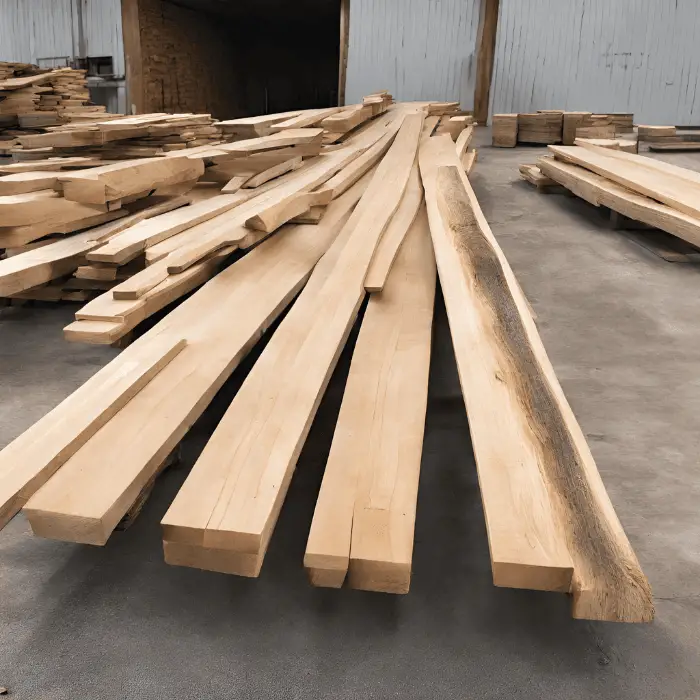Best Portable Chainsaw Mill in 2024 (Bars with 14-36″)
As a chainsaw expert, I’ve tested my fair share of mills and know what to look for. With so many options out there, it can be tricky to figure out which one is right for you.
The great thing about portable mills is how versatile they are. Whether you just need to cut a few boards or are taking on a bigger lumber project, these mills can get the job done. And they’re much more affordable than a full-size sawmill.
When choosing one, you’ll want to consider the size of logs you’ll be cutting, how precise you need the cuts to be, and any extra features that may be useful for you. I’d be happy to walk you through the top picks and help you find the perfect match for your needs. Just say the word and we’ll get started! The right mill is out there waiting – let’s cut through the noise and find it.
Key Takeaways
- Chainsaw mills are suitable for small-scale milling projects and are not designed for mass production of lumber.
- The cutting performance of chainsaw mills depends on the length of the chainsaw bar, allowing for cutting larger logs into lumber.
- Chainsaw mills are highly portable and cost-effective, making them ideal for projects in remote locations and for those on a smaller budget.
- Chainsaw mills provide versatility and flexibility in on-site milling, making them a valuable addition to a woodworker’s toolkit.

5 best portable chainsaw mill
Now let’s talk about the best portable chainsaw mills available on the market.
The top contenders include the Granberg Chainsaw Alaskan Small Log Mill, Carmyra Portable Chainsaw Mill, Timber Tuff TMW-56 Lumber Chainsaw Mill, Zchoutrade Portable Chainsaw Mill, and the Norwood PortaMill Chainsaw Sawmill.
Each mill has its own unique features and advantages, so it’s important to consider your specific needs and preferences before making a decision.
Carmyra Portable Chainsaw Mill
For the price, it’s a pretty solid portable mill option.
The sturdy steel and aluminum construction allow you to cut decent sized beams and planks from 0.5 to 13 inches thick. It attaches directly to your chainsaw bar without drilling, making set up a breeze. This versatility makes it great for milling cedar, walnut, oak – you name it.
One neat feature is the ability to cut lumber up to 36 inches wide – wider than many competitor mills out there. You can take on all kinds of projects with dimensions like that.
Now, it does have some downsides to be aware of. Some users report the measurement scales aren’t totally accurate. My advice would be to always double check cuts with a tape measure to be safe. The instructions also leave something to be desired, so be prepared to get your hands dirty dialing everything in.
But for the price, you get good bang for your buck. With some tweaking and practice, the Carmyra Portable Mill can deliver durable, wide lumber cuts. Just supplement the included instructions and you’ll be milling lumber in no time. Let me know if you have any other questions!
Product Specs:
- Manufacturer: Carmyra
- Item Weight: 15.48 pounds
- Product Dimensions: 36 x 12 x 18 inches
- Country of Origin: China
- Size: 14 to 36
- Material: Stainless Steel
Pros:
- Made of high-quality steel and aluminum
- Cuts cedar, walnut, and oak into high-quality lumber
- Attaches to saw without drilling bar
- Lower price compared to other options on the market
- Portable and can be used anywhere
Cons:
- Measuring scale on each upright isn’t accurate, may need to use a tape measure
- Instructions could be clearer
- Requires adjustments and securements for optimal performance
Granberg Chainsaw Alaskan Small Log Mill
The Granberg Alaskan Small Log Mill is easily the best portable mill out there. I always recommend it to folks looking to mill lumber on-site with just a chainsaw.
This DIY mill clamps right onto your chainsaw bar, so you don’t have to drill or modify your saw at all. It’s made of solid steel and aluminum – built rugged to handle any milling job. The best part is you can use it to cut planks up to 18 inches wide just about anywhere a tree falls.
No prior experience needed with this user-friendly mill. It comes with a handy guide that keeps your cuts accurate. Granberg even includes a plastic safety guard so you can operate safely.
With this mill, you’ve got total freedom and convenience to mill lumber wherever you are. And it will churn out boards, beams, and planks with incredible accuracy.
Made right here in the USA by family-owned Granberg International. They really stand behind their products and can advise you on any milling application.
So if you’re looking to mill your own lumber on-site, look no further than the Granberg Alaskan Small Log Mill. It’s the gold standard portable mill that every woodworker should have. Let me know if you have any other questions!
Product Specs:
- Product Dimensions: 24 x 13 x 4 inches
- Item Weight: 1.76 ounces
- Manufacturer: Granberg International
- Item model number: G777
Pros:
- Easy to assemble and use
- Sturdy construction
- Accurate and straight cuts
- Support and advice available from Granberg International
- Made in the USA
Cons:
- Some issues reported when using smaller chainsaws
- Rough cuts may require additional planing for finished boards
Timber Tuff TMW-56 Lumber Chainsaw Mill
Looking for the best portable chainsaw mill? Look no further than the Timber Tuff TMW-56 Lumber Chainsaw Mill. This heavy-duty steel mill is perfect for those who desire the freedom to mill their own lumber.
With its adjustable feature, you can easily cut up to 2 x 6 boards with precision. The durable powder-coat finish ensures that this mill will resist corrosion, making it a long-lasting investment.
Assembly is quick and easy, so you can start using it right away. Plus, it comes with a 1-year limited manufacturer’s parts warranty, giving you peace of mind. Take control of your woodworking projects with the Timber Tuff TMW-56 Lumber Chainsaw Mill.
Product Specs:
- Adjustable to cut up to 2 x 6 boards
- Measures 8 x 8.25 x 2.75 inches overall
- Constructed of heavy-duty steel
- Durable powder-coat finish resists corrosion
- Quick and easy assembly
- 1 year limited manufacturer’s parts warranty
Pros:
- Allows for milling your own lumber
- Adjustable for precision cuts
- Durable and corrosion-resistant
- Quick and easy assembly
- Comes with a 1-year warranty
Cons:
- May have weak spots in the U-clamp
- Requires careful clamping and checking of bolts
- Demanding on the chainsaw, requiring patience and safety awareness
Zchoutrade Portable Chainsaw Mill
Get the best portable chainsaw mill with the Zchoutrade Portable Chainsaw Mill. This high-quality tool is made with steel and aluminum construction, ensuring durability and longevity.
With the Zchoutrade Portable Chainsaw Mill, you can easily cut cedar, walnut, and oak into high-quality lumber, making it perfect for homeowners, woodworkers, and carpenters. It can cut beams or lumber from 0.5′ to 13′ thick and 36′ wide, providing versatility for your projects.
The mill attaches to your chainsaw without the need for drilling, making it convenient and hassle-free to use. Whether you’re milling lumber at home or in the woods, the Zchoutrade Portable Chainsaw Mill is a reliable and efficient tool to have.
Product Specs:
- Fits chainsaw bar length from 14 to 36 inches
- Material: Aluminum & Steel
- Weight: 15 pounds
- Dimensions: 37.7 x 10.7 x 2.8 inches
Pros:
- High-quality steel and aluminum construction
- Versatile cutting capabilities
- Convenient attachment to chainsaw without drilling
- Suitable for homeowners, woodworkers, and carpenters
- Can be used at home or in the woods
Cons:
- Some hardware issues reported (U bolts breaking)
- Tubing can deform when tightened, solved with shimming
- Position of upper round bar causes frustration
Norwood PortaMill Chainsaw Sawmill
The Norwood PortaMill Chainsaw Sawmill is the top choice for the best portable chainsaw mill. With its ultimate design, this sawmill offers convenience, ease of use, and exceptional mobility, making it perfect for those who desire liberation from traditional milling methods.
The assembly process is straightforward, taking about two evenings, and you won’t have to worry about low-quality bolts causing any issues.
For remote settings where vehicles can’t reach, this sawmill is a suitable option as it doesn’t have any single component weighing over 50lb.
However, it’s important to note that the need for fuel can negate the benefits of remote use, especially when using the Stihl ms311 saw, which goes through a tank of gas every 2-3 cuts.
Product Specs:
- Ultimate chainsaw sawmill
- Convenient, easy, and super-mobile solution
- No single component over 50lb
Pros:
- Suitable for remote settings where vehicles can’t reach
- Easy assembly process
- Exceptional mobility
Cons:
- Fuel consumption can negate the benefits of remote use
- Stihl ms311 saw goes through a tank of gas every 2-3 cuts
- Larger saws may work more efficiently
factors to consider to buy portable chainsaw mill
When considering to buy a portable chainsaw mill, there are several factors you should take into account.
First, you need to consider the size options available and choose a mill that suits your cutting needs.
It’s also important to assess the cutting capacity limits of the mill and ensure that it’s compatible with the materials you plan to work with.
Additionally, you should consider the portability features of the mill and how easy it’s to assemble.
Chainsaw Compatibility
Ensure the portable chainsaw mill is compatible with the chainsaw you own or plan to purchase. Check the mill’s specifications for compatible chainsaw.
Mill Size Options
The size of the mill will determine the maximum length and diameter of logs that can be milled.
If you plan on milling small to medium-sized logs, a compact mill will suffice. However, if you anticipate milling larger logs, you’ll need a mill with a larger cutting capacity.
It’s important to choose a mill size that aligns with your specific milling needs to ensure efficient and effective operation.
Cutting Accuracy and Precision
Assess the mill’s ability to produce accurate, straight and even cuts. Keep in mind that even a well-setup “accurate” mill can only achieve a 1/32″ accuracy, which is the standard for a chainsaw mill
Cutting Capacity Limits
To determine the cutting capacity limits and factors to consider when buying a portable chainsaw mill, it is important to assess the size and type of logs you will be milling.
The cutting performance of chainsaw mills depends on the length of the chainsaw bar, as longer bars allow for cutting larger logs into lumber. Additionally, the size of operation and total mill production capacity are crucial considerations.
Hobbyists may need smaller capacity mills, while income-producing mills require higher production capacity.
Another factor to consider is the use of hydraulics, which can speed up the sawing process and make it easier and more efficient.
Lastly, the availability and compatibility of accessories can enhance the versatility and functionality of the chainsaw mill.
| Factors to Consider | Cutting Capacity Limits |
|---|---|
| Length of chainsaw bar | Determines the size of logs that can be cut into lumber |
| Size of operation | Determines the production capacity required |
| Use of hydraulics | Increases efficiency and speed of the sawing process |
| Availability of accessories | Enhances the versatility and functionality of the mill |
Cutting Guide
Some mills have features like cutting guide. Cutting guides are an essential component of chainsaw mills that help to produce accurate, straight, and even cuts. Here are some points to consider based on the search results:
- Guide rails: Guide rails provide a flat surface for the chainsaw mill to slide across when making the first cut. These can be manufactured or made at home using materials like an extension ladder or 2x4s that have been jointed and planed to ensure they are flat.
- Edge guides: Edge guides are used to cut the edges off of logs to create a flat surface for the first cut. These can be purchased or made at home using materials like a Timber Tuff saw guide
Material Compatibility Considerations
Consider the compatibility of the material when purchasing a portable chainsaw mill. To ensure a successful milling experience and avoid inefficiency and financial loss, it’s important to take into account the following factors:
- Type of wood and its characteristics: Different types of wood have varying hardness, density, and moisture content. Choose a chainsaw mill that can handle the specific wood you plan to mill.
- Size of logs and products needed: Determine the dimensions and specifications of the logs and products you intend to cut. Ensure that the mill you choose is compatible with the size of the logs and can produce the desired lumber dimensions.
- Production capacity and limitations: Assess your cutting needs and consider the intended scale of your milling projects. Choose a chainsaw mill that can meet your production requirements without compromising efficiency.
- Durability and workload: Evaluate the expected workload and frequency of use. Select a chainsaw mill that’s durable enough to withstand the demands of your projects and can handle the volume of work you anticipate.
Portability Features to Consider
As someone who desires liberation, you want a mill that can be easily transported to different locations. Look for mills that are highly portable and can be packed and transported easily.
This will allow you to take your mill anywhere, especially to remote locations where your woodworking projects may be. Additionally, consider the weight and size of the mill, as well as any additional features like handles or wheels that make it easier to move around.
Ease of Assembly
When looking to purchase a portable chainsaw mill, you’ll want to prioritize the ease of assembly to ensure a smooth and efficient setup process. Here are four factors to consider to ensure an easy assembly experience:
- Simplicity of Design: Look for a chainsaw mill that has a straightforward and user-friendly design. Avoid complex and convoluted setups that could lead to frustration and wasted time.
- Clear Instructions: Make sure the portable chainsaw mill comes with clear and concise instructions that are easy to follow. This will save you from the frustration of guessing and experimenting during the assembly process.
- Minimal Tools Required: Consider a chainsaw mill that requires minimal tools for assembly. This will save you time and effort, allowing you to start using the mill quickly and easily.
- Quick Assembly Time: Look for a portable chainsaw mill that boasts a quick assembly time. This will enable you to set up the mill efficiently and start milling your lumber without unnecessary delays.
Prioritizing the ease of assembly will ensure a stress-free and enjoyable experience with your portable chainsaw mill, allowing you to focus on your woodworking projects and unleash your creativity.
Stability and Durability Factors
To ensure a stable and durable portable chainsaw mill, prioritize factors such as the construction materials and the overall weight of the mill.
Look for a mill that’s made of high-quality, sturdy materials such as aluminum or steel. These materials offer excellent durability and resistance to wear and tear.
Additionally, consider the weight of the mill, as a lighter mill will be easier to transport and maneuver. However, be cautious not to sacrifice stability for a lighter weight. A well-balanced and sturdy mill will provide better stability during operation, resulting in more accurate cuts and a safer working environment.
Price Range Variations
When considering the purchase of a portable chainsaw mill, it’s important to understand the price range variations and factors that should be taken into account.
Here are four factors to consider when buying a portable chainsaw mill:
- Budget: Determine your budget and find a chainsaw mill that fits within your price range. Consider the long-term cost and accessibility to a variety of budgets.
- Features: Look for a quality product with the features you need for the best value. Research and find the right sawmill that fits your needs.
- Affordability: Consider the cost of the chainsaw mill and any additional accessories or attachments that may be needed. Woodland Mills offers expert Product Advisors to help identify the perfect mill.
- Adaptability: Choose a portable sawmill that’s adaptable to future needs. Consider potential accessories and attachments that may be desired in the future. Help and resources are available to support the selection of the right mill and adaptability to changing needs.
Maintenance Requirements
Now let’s delve into the maintenance requirements and factors to consider when purchasing a portable chainsaw mill.
When it comes to maintenance, it’s important to choose a mill that’s easy to clean and maintain. Look for mills that have accessible parts and clear instructions for maintenance tasks.
Consider the durability of the mill and its ability to withstand regular use and potential wear and tear. Additionally, think about the availability and cost of replacement parts, as well as the level of technical support provided by the manufacturer.
These factors will ensure that your portable chainsaw mill remains in good working condition and serves you well for years to come.
Brand Reputation Analysis
One important factor to consider when buying a portable chainsaw mill is the reputation of the brand. The brand reputation reflects the overall quality and reliability of the mill, as well as the level of customer satisfaction.
A reputable brand is more likely to provide a durable and efficient chainsaw mill that meets your milling needs. To help you evaluate the reputation of different brands, consider the following factors:
| Factors to Consider | Explanation |
|---|---|
| Customer Reviews | Read customer reviews to get insights into the experiences of other users. Look for positive feedback and high ratings. |
| Industry Recognition | Check if the brand has received any awards or recognition for their chainsaw mills. This can indicate their commitment to quality and innovation. |
| Warranty and Support | Look for brands that offer comprehensive warranties and reliable customer support. This shows that the brand stands behind their product and is committed to assisting customers. |
Frequently Asked Questions
What Is the Average Price Range for a Portable Chainsaw Mill?
The average price range for a portable chainsaw mill varies depending on the brand and features. However, you can typically find options ranging from around $100 to $500.
Can a Portable Chainsaw Mill Be Used to Cut Any Type of Wood?
Yes, a portable chainsaw mill can be used to cut various types of wood. It provides flexibility for cutting different logs into lumber, making it suitable for a wide range of woodworking projects.
Are There Any Specific Safety Precautions That Need to Be Taken When Operating a Portable Chainsaw Mill?
When operating a portable chainsaw mill, it’s crucial to prioritize safety. Take necessary precautions like wearing protective gear, securing the log properly, and maintaining a safe distance from the chainsaw.
How Long Does It Typically Take to Set up and Assemble a Portable Chainsaw Mill?
Setting up a portable chainsaw mill usually takes about 30 minutes to an hour. Follow the manufacturer’s instructions, secure the mill to the log, and adjust the cutting depth.
Is It Possible to Use a Portable Chainsaw Mill on Uneven Terrain?
Yes, you can use a portable chainsaw mill on uneven terrain. However, it may require additional adjustments and precautions to ensure stability and accuracy during the milling process.







